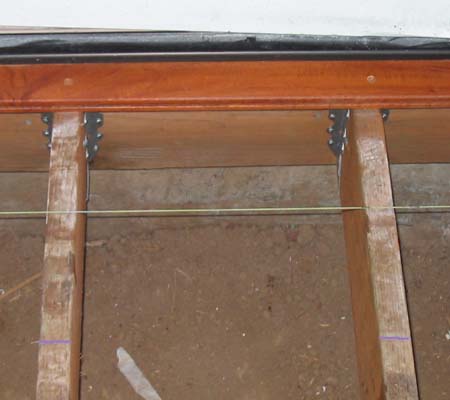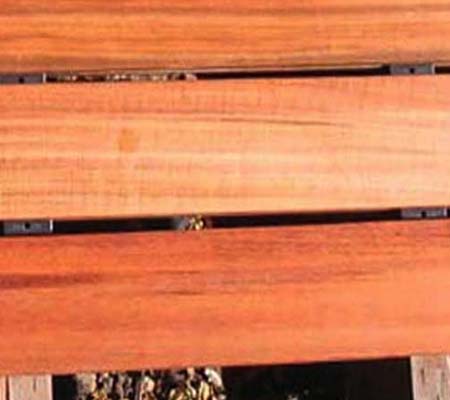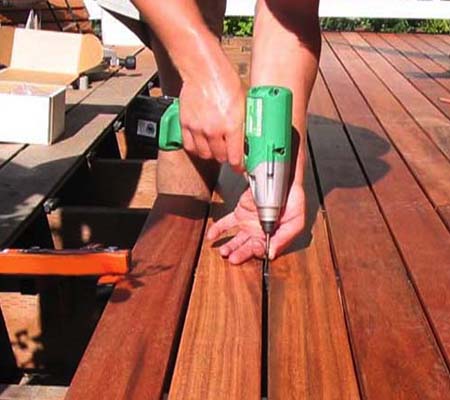TigerDeck® 3-Step Installation Instructions
Our unique BlackTalon® Hidden Fastening System makes decking installation easy and efficient. Before you begin the 3-step process, be sure to review the tools you will need, what to do before you begin, and our important tips.
1. Lay Deck Boards and Fasteners in Place

2-5 rows of TigerDeck® Tigerwood deck boards (or the entire deck) can then be laid out on the joists with one clip on each joist. Do not screw the clips down as you go. Push everything in place with hand pressure and set up Bow Wrench(s) or Hardwood Wrench(s) in preparation for squeezing a 2-5 row section tight. A natural bow should be placed with the belly out.

To learn more about our BlackTalon® Universal Deck Fasteners, click here.
2. Secure Deck Fasteners to Joists, Applying Pressure to Deck Boards
Using the Bow Wrench installation tool (or Hardwood Wrench), apply pressure to slowly press the section together (be sure clips are in the grooves). Note: A 16-penny nail inserted into the clip screw hole helps clip adjustment. Before squeezing the section tight, be sure to tap the ends of the deck boards with a hammer to snug the ends up tight. Look at the section over one more time for defects (which may need to be trimmed out), tight butt joints, deck boards tight to the clip legs ensuring proper decking spacing, straight lines, and color/aesthetics. Squeeze section TIGHT. Clips can then be secured to the joists with the stainless-steel screws provided. Screws should be installed with a clutch-equipped drill, setting the torque so that the top of the clip slightly flexes. The last row of clips, closest to the Bow Wrench, should not be tightened completely, only enough to hold the last board in place while laying out the next 2-5 rows, thus ensuring proper decking spacing for your installation.

Having multiple rows ahead of the Bow Wrench or Hardwood Wrench allows enough holding power on boards to resist natural bowing in boards when the pressure is released to move to the next set of boards. If there is a lot of natural bow in the last board it may be necessary to provide temporary holding power by shooting a nail or staple at an angle into the joist to hold the board until the next set of boards are placed and the Bow Wrench is again in tension (some contractors prefer to use two Bow Wrench tools having the next set of boards in place before releasing the first tool). Deck boards must be square and tight. Using Tiger Deck® clips and screws will provide the proper gap and are designed to allow small amounts of wood movement yet hold tight.
To learn more about our BlackTalon® Universal Deck Fasteners, click here.
3. Install Decking Accessories
Butt Joints – Butt joints should have 1 screw pre-drilled and centered as far from the end of the board as possible but still allow penetration into the joist. This can be done as you go or after your Tigerwood decking installation is complete using the clip system. Countersink and plugging screw holes adds a beautiful furniture-type finished look for a small amount of additional work. Or you can add a block to the double joist so there is a clip at both ends.
Fascia – Fascia boards (or any other continuous face-to-face application) should be pre-drilled and face screwed 1” from the deck board edge and through 1/8” or thicker lathe backing every 16” when installed against any flat surface to provide air space/moisture drain to the back of the board.